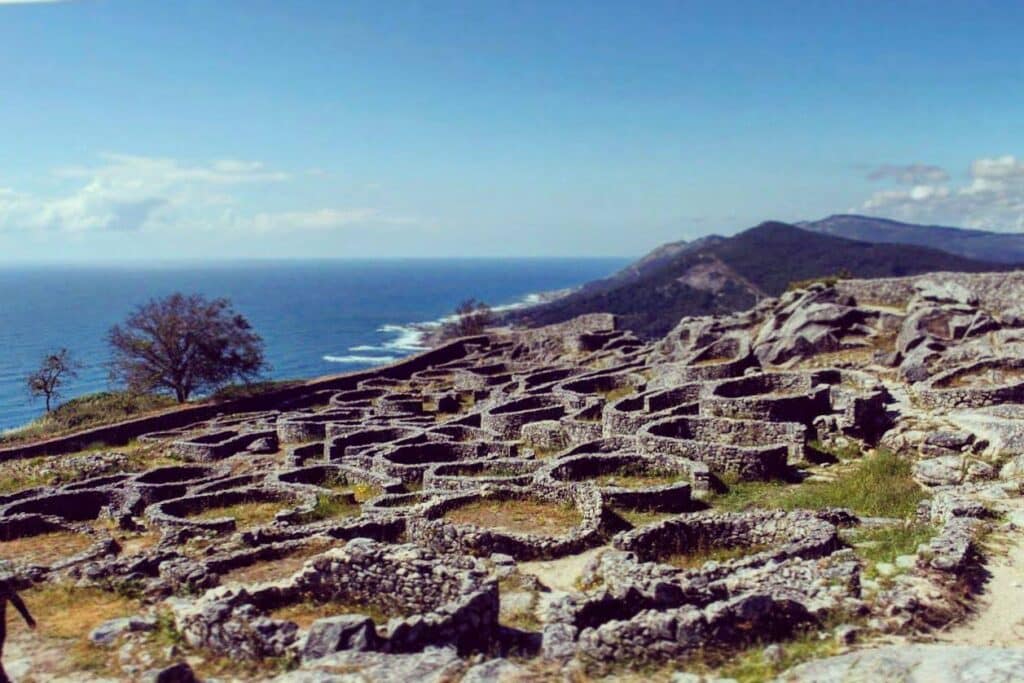After breakfast we are ready to continue our journey north, from Orbenlle to Mos. After a lovely walk through woods and rural villages, we arrive to O Porriño. The town is an important crossroads in Galicia. The town lays roughly in the place where the road from the busy port city of Vigo on the coast heading east towards Castile intersects with the major trade route between Santiago de Compostela and Portugal in the south.

As you will very quickly begin to notice, today we will be entering and walking through the wine-producing region of the Rías Baixas. This region extends throughout most of the west coast of the Province of Pontevedra, which roughly corresponds to the south-western part of Galicia. For much of our walk, dozens of vineyards line the Camino, many on what appear to be small family plots. Las Rías Baixas is perhaps the most famous of the wine-producing regions in Galicia, and the native white albariño grape its flag bearer. Indeed, many Spaniards actually call this wine by the grape, albariño, instead of using the generic Rías Baixas.

We will continue our journey through the vineyards and stop to try a glass of the region’s famous wine and enjoy a gourmet picnic full of local cheeses while enjoying the lush landscape. After our lunch we will continue walking to reach our destination for today, the town of Mos. Mos’s call to fame is the 17th century Pazo de Mos, which proudly overlooks the small town square facing the church. This monumental example of local aristocratic architecture was standing in ruins until 2002 when a group of locals found the means and the funds to restore the pazo and provide the district with a space for cultural activities.
On the way back to our hotel we wrap up the date with a visit to the most spectacular castro in Galicia. The castro (Celtic hillfort settlement) of Santa Tecla sits at the top of a hill with spectacular views of the Miño River, Portugal and the Atlantic Ocean.

The Castro de Santa Tecla is one of the most well-preserved examples of a castro in Galicia. The site has provided valuable insights into the daily lives, culture, and architecture of the Celtic people who inhabited the region during the Iron Age. Excavations have revealed artifacts, tools, pottery, and other objects that offer a glimpse into the past. Within the fortified walls, circular stone huts were constructed to serve as dwellings for the inhabitants. These huts were made using a technique known as “cyclopean masonry,” which involves the use of large irregular stones.






